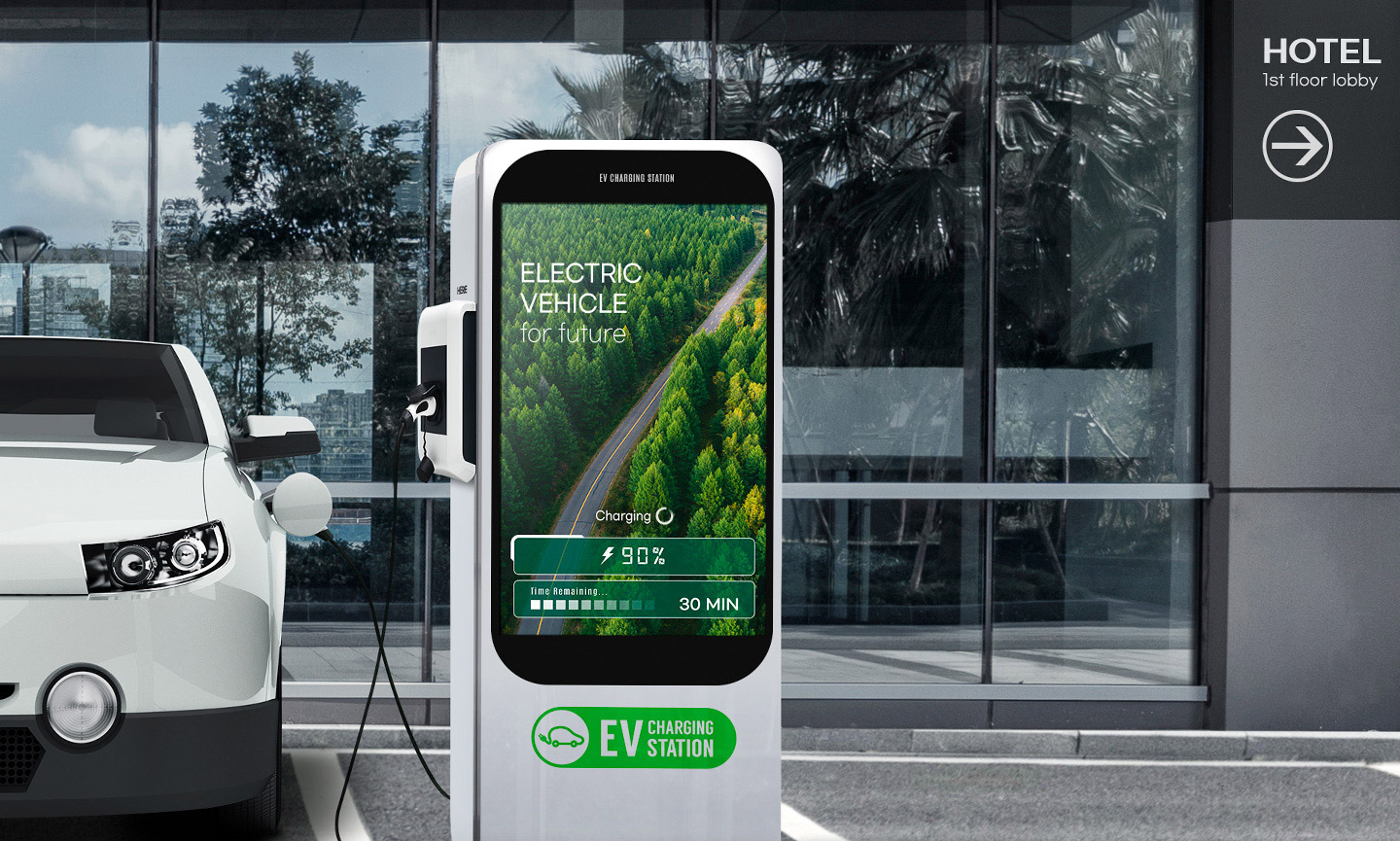
By Henrik Hansen, Business Development Manager, EDO at Samsung Electronics Europe

As electric vehicle (EV) ownership increases and as we drive towards a sustainable future, more and more vehicle charging stations are popping up across Europe. Often strategically located near shopping malls, petrol stations and retail parks. As of 1st April 2023, in the UK alone, there were 40,150 public electric vehicle charging devices available, and across Europe, there are 6.8 million set to be installed by the end of this year.
Increasingly, EV charging stations are equipped with digital displays, presenting a new opportunity for retailers and brands to connect with existing and prospective customers. Not only are these displays often situated in a retail environment where people are ready to buy, but they can also serve as the first point of contact within a customer journey starting in a workplace or hospitality setting.
Drive your competitive advantage
Imagine you are pulling into the car park of a supermarket and looking to charge your vehicle. Maybe you haven’t had your EV for that long and you’re not sure how to connect the device. That isn’t a problem. The charger’s digital display not only offers a tutorial of “how to” use it effectively, but once you’re connected, will show you an infographic with charging status, timings, and other useful information. Already pleased and slightly relieved at how smooth the experience has been so far; the display then lets you know which items are on sale in store before you start your shopping experience.
Through this interaction, retailers can now offer prospective customers valuable information relevant to the context where the ad is displayed. Through highlighting new products and services or discounts, customers can enter a retail environment knowing exactly where to find a product, increasing dwell time, and driving in-store sales. Aside from an advertisement, organisations can also utilise this space to demonstrate their sustainability leadership and corporate values.
In the context of a hotel or workplace, businesses may promote the latest amenities on offer, share unique community messages and gain revenue from a partner’s promotion before their customer has even set foot through the door.
Through car model recognition, retailers can offer personalised and targeted advertising, ensuring customers see the information most relevant to them, as predicted through factors such as location and vehicle model, which estimate the most likely purchase preferences.
Optimise for outdoors
Digital signage provides a significantly enhanced customer experience when compared to the traditional static image. Not only can auto brightness sensors ensure an advertisement is easily readable regardless of light conditions, a number of screens are made from durable glass to ensure optimum performance.
The best EV charger display screens have optimised device management solutions, allowing retailers to remotely schedule their advertisements, minimising manual work and site visits, which are costly and inefficient. Real-time displays also allow for content to be flexibly adjusted according to the time and place, reinforced by security protections against external threats, such as hackers.
Retailers who take the initiative now to reach new and existing shoppers from the very first point of contact at the EV charging station, have the opportunity to supercharge their advertising strategies and build a strong customer journey that will last for years.










